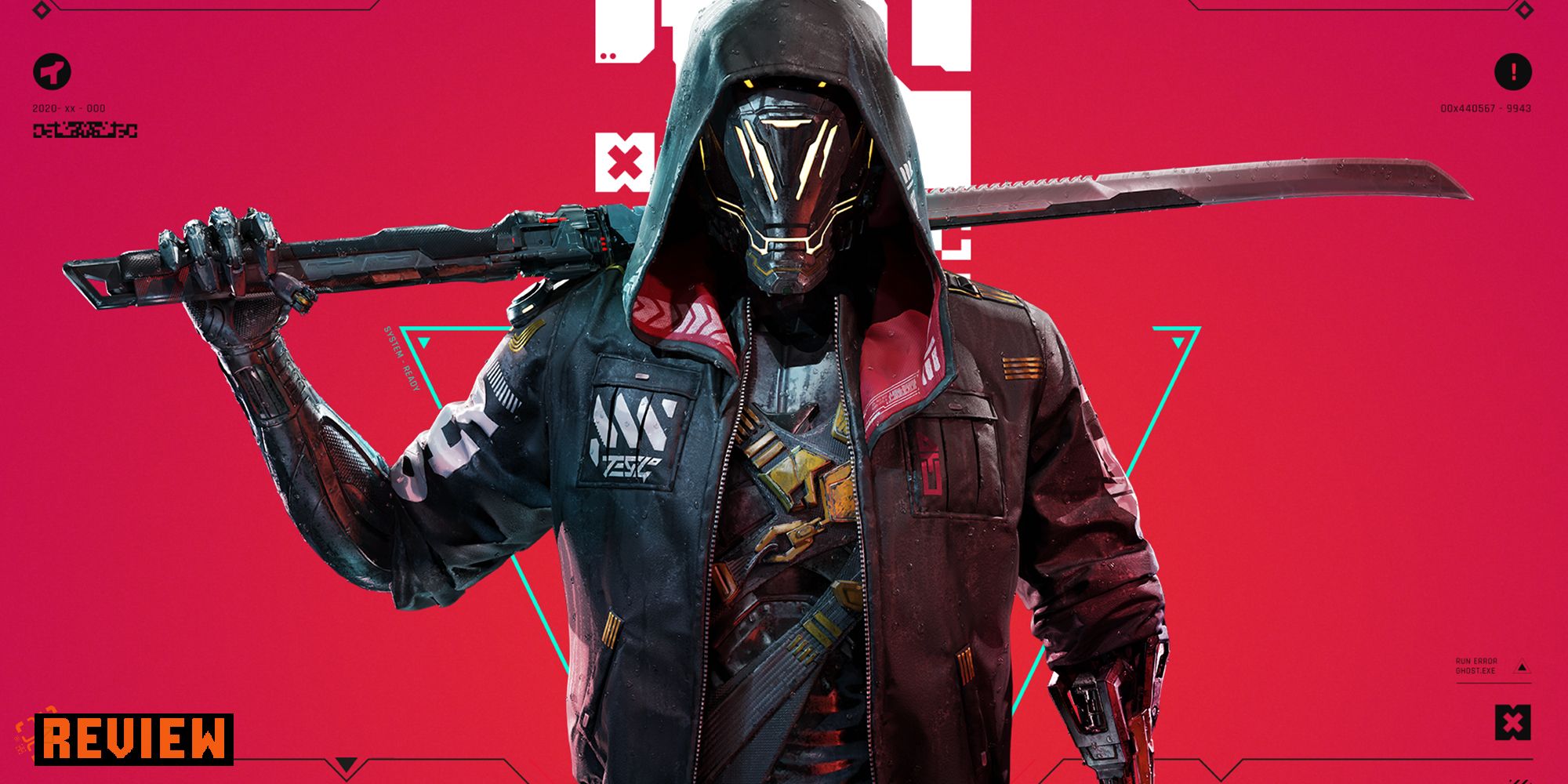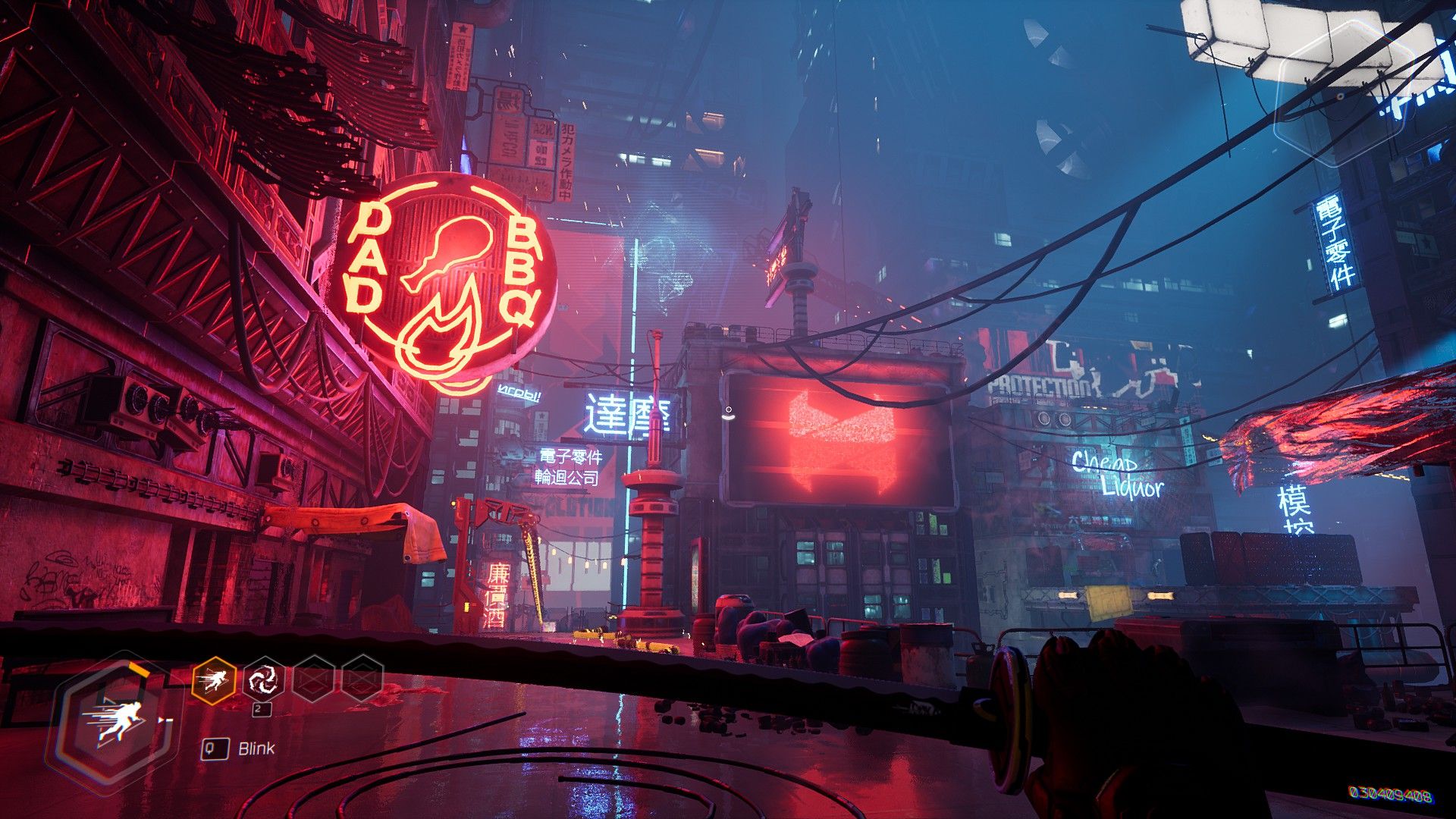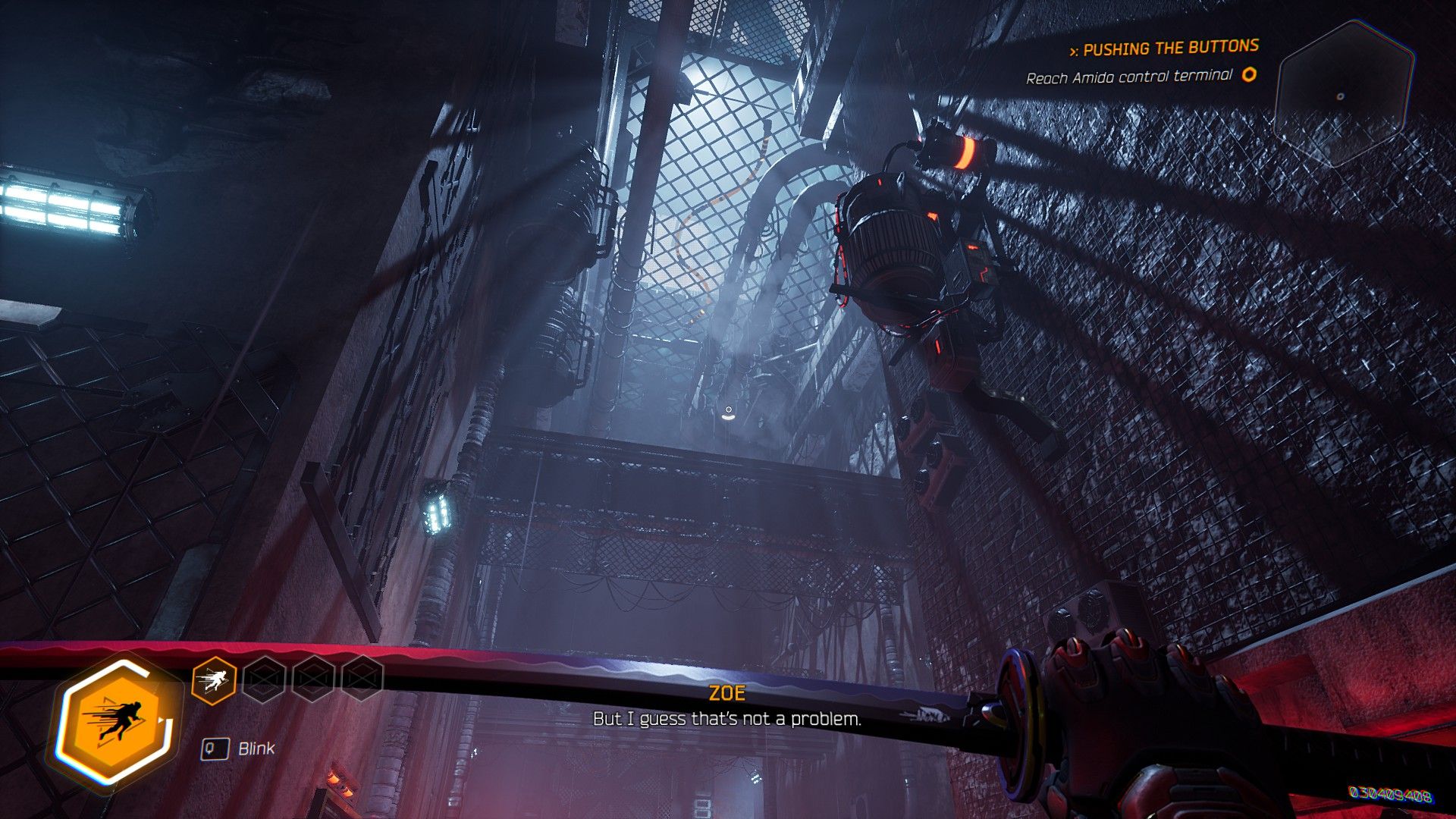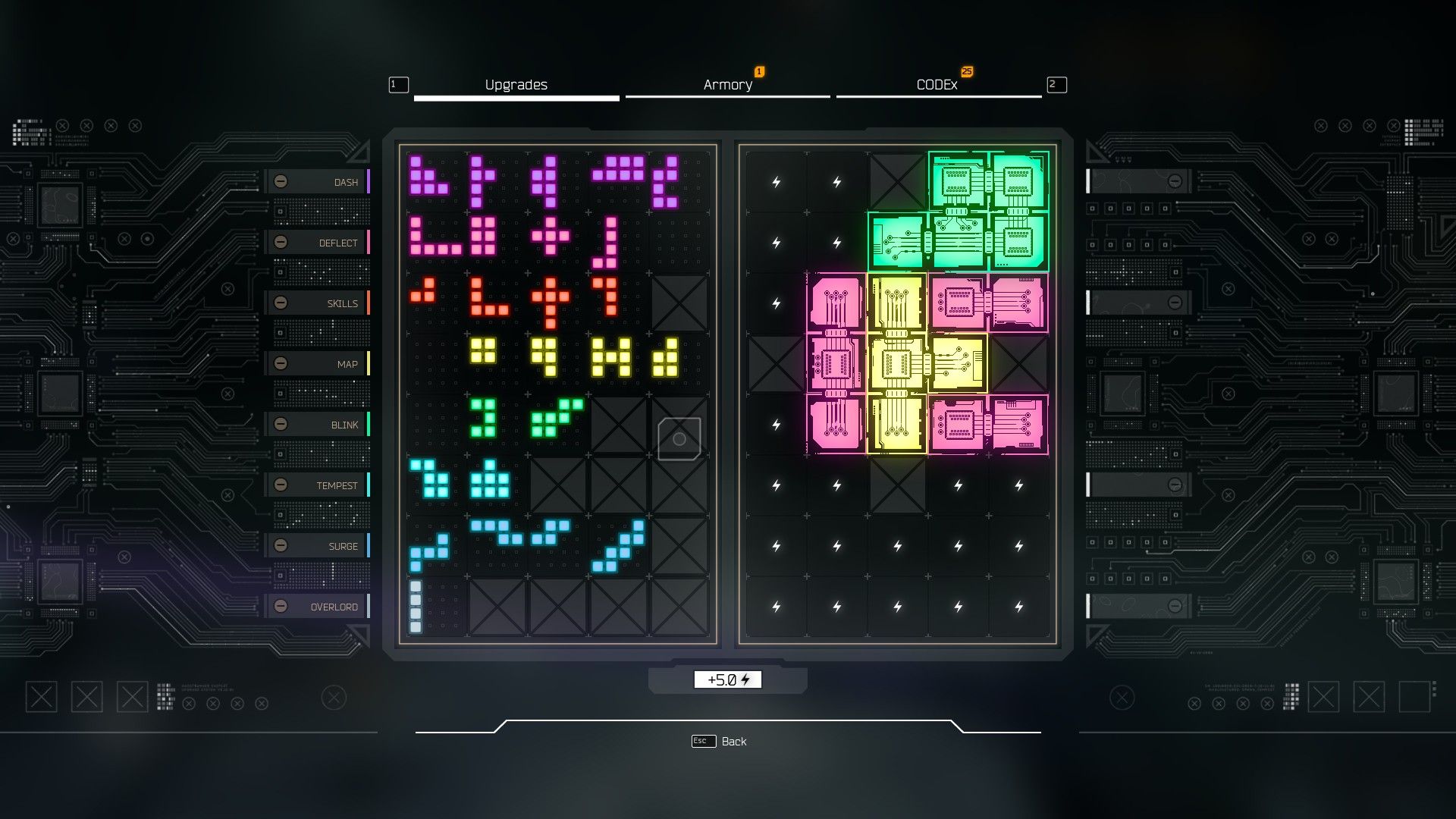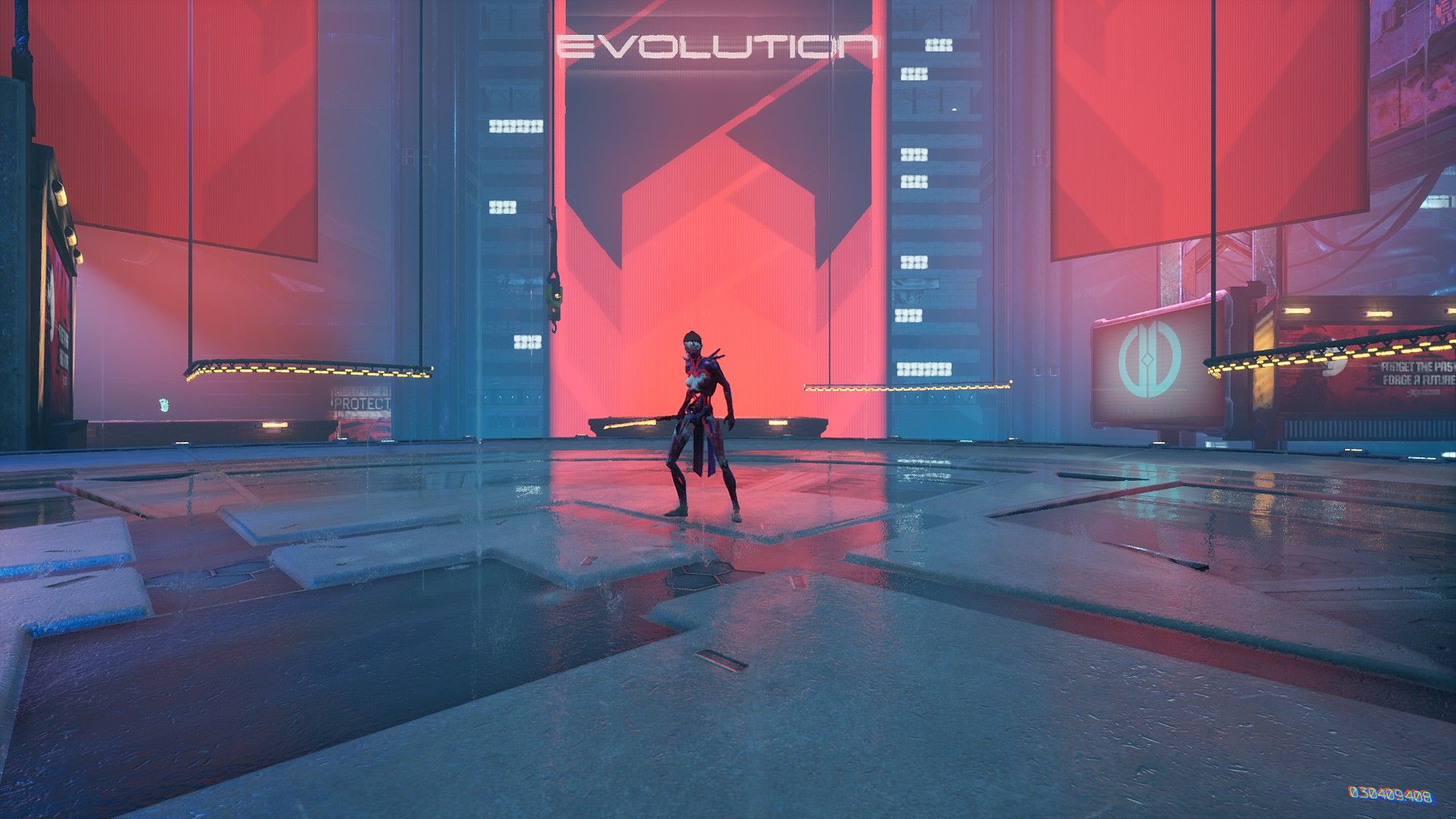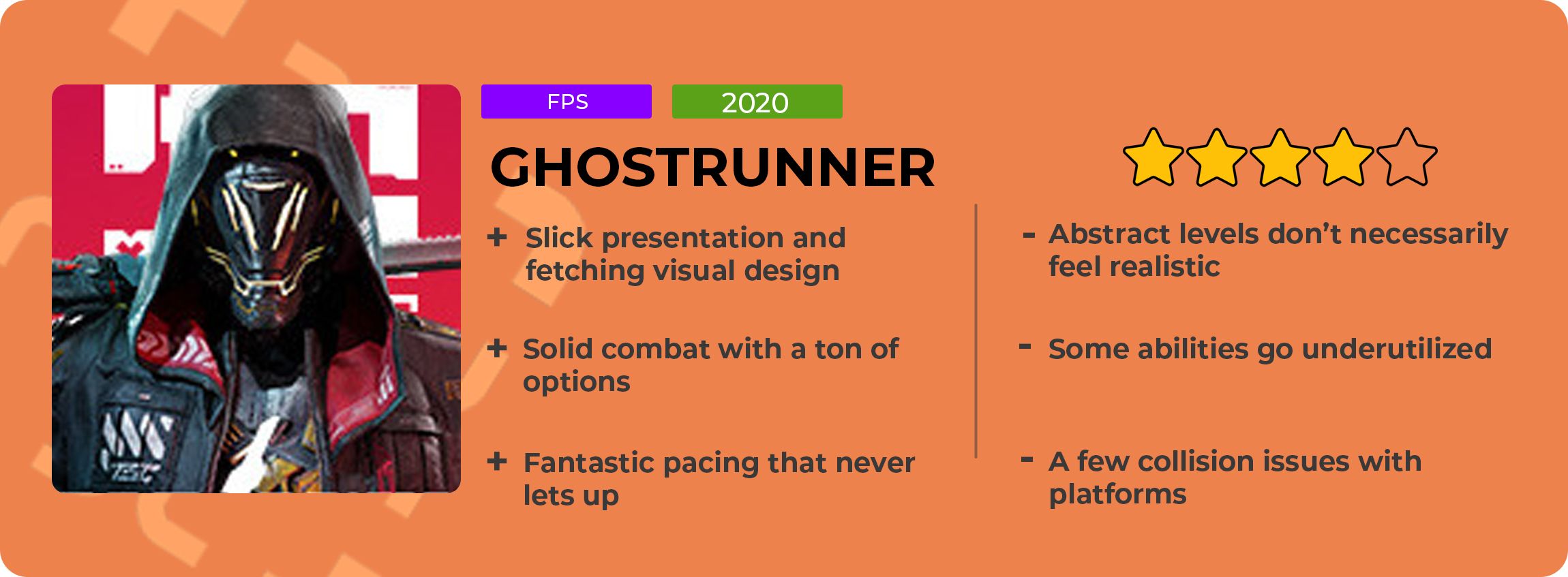Mainstream gaming might be continuously pushing for expansive open-world experiences, but indie developers have shied away from such templates. Nothing paints that picture better than the first-person shooter genre. Call of Duty is still linear and multiplayer-focused, but Ubisoft's Far Cry continuously grows and grows, leaving behind the original idea that Crytek started in 2004.
In the indie sphere, titles like DUSK, Ion Fury, and Amid Evil have gone in a more old-school direction. Smaller scale, linear focused titles that are looking to provide strongly directed campaigns; it warms my retro-loving heart to see such things exist. That brings us to today's subject: Ghostrunner.
Sporting a stylish cyberpunk aesthetic and combining elements from Mirror's Edge, Hotline Miami, and even Deus Ex, the hype was through the roof leading up to release. Has developer All In Games made good on this premise, or is Ghostrunner all style and no substance?
Ghosting On A Narrative
Summing up the plot of Ghostrunner is fairly easy since the narrative design doesn't break any new ground. After an introductory cutscene where you smoothly take out some thugs, the game quickly throws you into the shoes of an unnamed character simply referred to as "The Ghostrunner." You're working with an AI known as "The Architect" to topple a futuristic dystopia and restore humanity to its former glory.
That's not to say the game is poorly acted or sloppily written, but you won't be sticking with Ghostrunner because of its in-depth plot. Much like other games throughout publisher 3D Realms' history, Ghostrunner puts gameplay and level design front and center. This is for the best since it feels like an action title from a bygone era. Once you're past the first exposition dump, Ghostrunner rarely removes control from you.
That extends to tutorials as well. Ghostrunner doesn't feature too much in the way of explanation, but the level design is so logically laid out that you tend to immediately know what needs to be done. All of your abilities are natural extensions of the platforming and are laid out in an intuitive manner. It helps that audio logs aren't bloated with flowery writing, meaning they get straight to the damn point.
Slice 'N Dice
The combat, as well, is much like that. While you have upgrades and new skills that are progressively introduced, the main form of dispatching your foes is with your cyber katana. The protagonist even jokingly asks at one point, "Why didn't you give me a gun?" but the simplicity here means you aren't struggling with complicated controls or unnecessary abilities.
Every upgrade is more down to your personal choice, but I am a little baffled about how the ability to deflect projectiles isn't a default option. The way upgrades work is through a system that could be compared to Resident Evil 4's inventory management. You'll get Tetris blocks that can be rotated and arranged on a grid and must be placed so they don't overlap. Why you'd want to exclude deflection is beyond me, though.
I understand the idea with Ghostrunner is to get you using your slow-motion dodge and to wall-run around foes, but I often ran straight at them and deflected shots right back in their face. It doesn't work on everyone since the enemies become tougher as you proceed through the campaign, but it is far and away the most important upgrade you can pick.
Your other abilities take the form of four augmentations: Blink, Tempest, Surge, and Overload. Blink lets you instantly dash at a foe and ignore their projectiles or shields. Tempest targets multiple foes and attacks them in one swift movement. Surge fires a wave beam that lets you attack from a distance. Lastly, Overload lets you hack a foe's mind so they attack their allies. They are all useful, but the game rarely pushes you to make specific utilization of them.
Overload is also introduced so late into the campaign that you don't get much of a chance to unleash it. While a level select option lets you replay earlier levels with all abilities unlocked, it would have been nice to see enemies that required certain abilities show up. Instead, the game is balanced around you having only your sword, so you can theoretically ignore every upgrade and play it in a vanilla state. That's something I refer to as Mega Man Syndrome, but it's hardly a deal-breaker.
Another issue that is mostly inconsequential is the atmosphere of Ghostrunner. If you were hoping that its cyberpunk world would feel like a living breathing space, you'll be disappointed. Every level is a segmented piece that features mostly abstract platforming designs. There are a few areas where you get a true sense of scale for this city, but Ghostrunner is gamier instead of realistic. It almost mirrors Doom Eternal, which ditched the often believable environments from Doom 2016 to create more interesting and arcade-like combat arenas.
Wall-Running To Success
That is all going to be a matter of preference to individual players, but one thing is certain: Ghostrunner nails its gameplay. It feels wonderful to jump at a wall, start seamlessly running, deflect a projectile, then jump down and take other enemies by surprise. There are a few spots where the collision detection for platforms results in you either missing or falling, but death incurs an instant restart from the nearest checkpoint. You rarely lose more than a minute or two upon failure.
With the game only being about five hours long, even its sometimes frustrating boss encounters can't keep you from having fun. Ghostrunner is so expertly paced that once I hit the credits, I just wanted to jump back in. I wasn't able to check out its ray-tracing support, so I have some visual incentive to return in the future, as well. The visuals are killer, by the way, and should make for a solid showpiece of your fancy new PCs or next-gen consoles.
There are certainly areas where All In Games could improve for a sequel, but Ghostrunner is a blast. It's one of the best games of the year and something I'd easily recommend to fans of Mirror's Edge or first-person games in general.
A PC copy of Ghostrunner was provided to TheGamer for this review. Ghostrunner is now available on PC, PS4, and Xbox One. A Switch version will launch in November with ports for PS5 and Xbox Series X coming in early 2021.
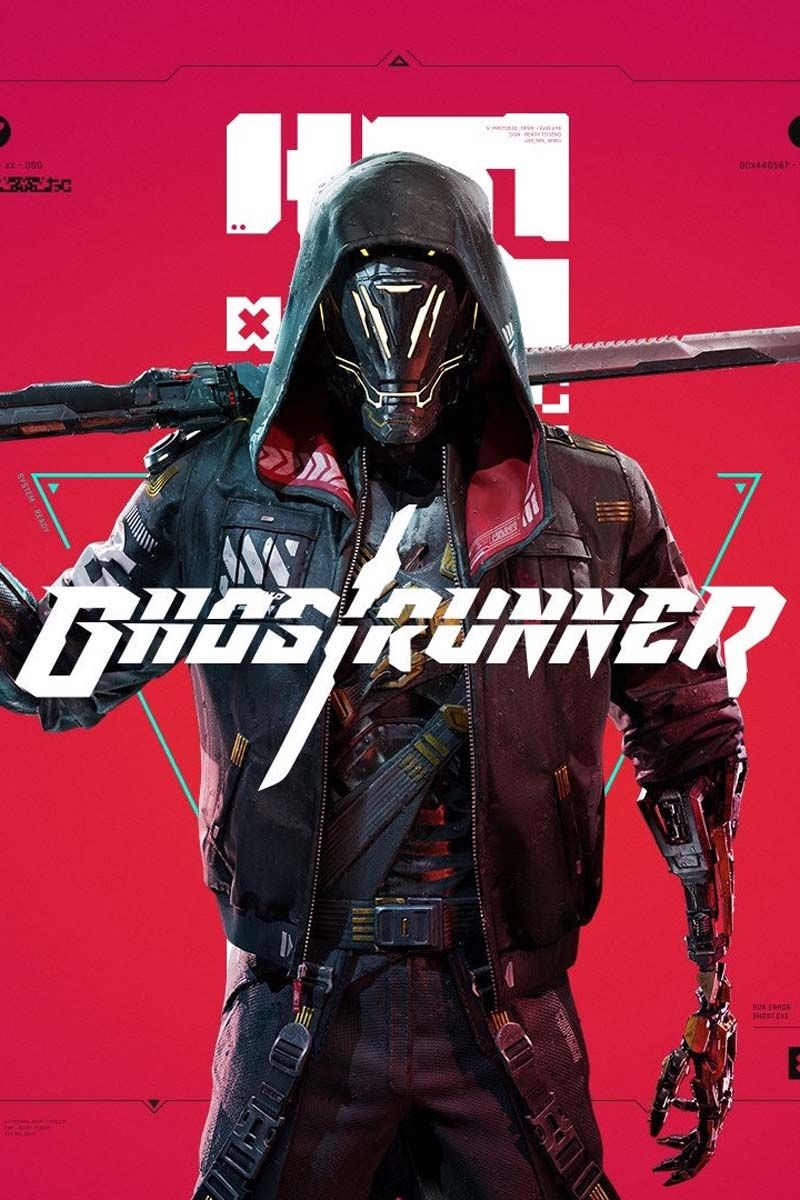
Ghostrunner
Ghostrunner combines fast-paced first-person perspective with parkour action. Set in a futuristic, cyberpunk-influenced world, you're tasked with ascending the Dharma Tower in a mission of revenge.

